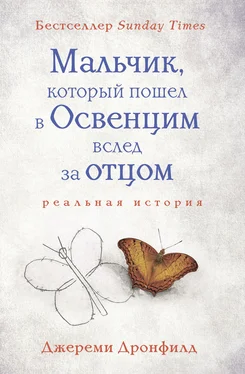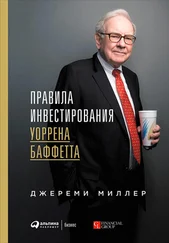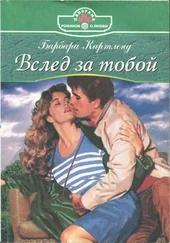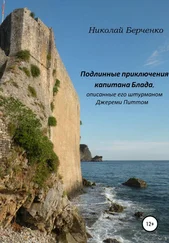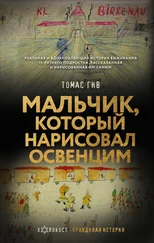Kurzweil, Edith, Nazi Laws and Jewish Lives (London: Transaction, 2004).
Langbein, Hermann, Against All Hope: Resistance in the Nazi Concentration Camps, 1938–1945 , transl. Harry Zohn (London: Constable, 1994).
Langbein, Hermann, People in Auschwitz , transl. Harry Zohn (Chapel Hill, NC: University of North Carolina Press, 2004).
Le Chêne, Evelyn, Mauthausen: The History of a Death Camp (Bath: Chivers, 1971).
Levi, Primo, Survival in Auschwitz and The Reawakening: Two Memoirs (New York: Summit, 1986; previously publ. 1960, 1965).
Loewenberg, Peter, ‘The Kristallnacht as a Public Degradation Ritual’ in The Origins of the Holocaust , ed. Michael Marrus, pp. 582–96 (London: Meckler, 1989).
London, Louise, Whitehall and the Jews, 1933–1948: British Immigration Policy, Jewish Refugees and the Holocaust (Cambridge: Cambridge University Press, 2000).
Lowenthal, Marvin, The Jews of Germany (London: L. Drummond, 1939).
Lucas, James, Fighting Troops of the Austro-Hungarian Army, 1868–1914 (Tunbridge Wells: Spellmount, 1987).
Maier, Ruth, Ruth Maier’s Diary: A Young Girl’s Life under Nazism , transl. Jamie Bulloch (London: Harvill Secker, 2009).
Mazzenga, Maria (ed.), American Religious Responses to Kristallnacht (New York: Palgrave Macmillan, 2009).
Megargee, Geoffrey P. (ed.), The United States Holocaust Memorial Museum Encyclopedia of Camps and Ghettos, 1933–1945 , 4 vols (Bloomington, IN: Indiana University Press, 2009).
Pendas, Devin O., The Frankfurt Auschwitz Trial, 1963–1965 (Cambridge: Cambridge University Press, 2006).
Phillips, Raymond, Trial of Josef Kramer and Forty-Four Others: The Belsen Trial (London: W. Hodge, 1949).
Plänkers, Tomas, Ernst Federn: Vertreibung und R ü ckkehr. Interviews zur Geschichte Ernst Federns und der Psychoanalyse (Tьbingen: Diskord, 1994).
Pukrop, Marco, ‘Die SS-Karrieren von Dr. Wilhelm Berndt und Dr. Walter Döhrn. Ein Beitrag zu den unbekannten KZ-Ärzten der Vorkriegszeit,’ Werkstatt Geschichte 62 (2012), pp. 76–93.
Rabinovici, Doron, Eichmann’s Jews: The Jewish Administration of Holocaust Vienna, 1938–1945 , transl. Nick Somers (Cambridge: Polity Press, 2011).
Rees, Laurence, The Holocaust: A New History (London: Viking, 2017).
Rosenkranz, Herbert, ‘The Anschluss and the Tragedy of Austrian Jewry 1938–1945’ in The Jews of Austria , ed. Josef Fraenkel, pp. 479–545 (London: Valentine, Mitchell, 1970).
Sagel-Grande, Irene, H. H. Fuchs and C. F. Rьter, Justiz und NS – Verbrechen: Sammlung Deutscher Strafurteile wegen Nationalsozialistischer T ö tungsverbrechen 1945–1966: Band XIX (Amsterdam: University Press Amsterdam, 1978).
Schindler, John R., Fall of the Double Eagle: The Battle for Galicia and the Demise of Austria – Hungary (Lincoln, NE: University of Nebraska Press, 2015).
Silverman, Jerry, The Undying Flame: Ballads and Songs of the Holocaust (Syracuse, NY: Syracuse University Press, 2002).
Sington, Derrick, Belsen Uncovered (London: Duckworth, 1946).
Stein, Harry (compiler), Buchenwald Concentration Camp 1937–1945 , ed. Gedenkstütte Buchenwald (Göttingen: Wallstein Verlag, 2004).
Taylor, Melissa Jane, ‘Experts in Misery’? American Consuls in Austria, Jewish Refugees and Restrictionist Immigration Policy, 1938–1941 (University of South Carolina: PhD dissertation, 2006).
Teichova, Alice, ‘Banking in Austria’ in Manfred Pohl (ed.), Handbook on the History of European Banks , pp. 3–10 (Aldershot: Edward Elgar, 1994).
Trimble, Lee with Jeremy Dronfield, Beyond the Call (New York: Berkley, 2015).
van Pelt, Robert Jan, The Case for Auschwitz: Evidence from the Irving Trial (Bloomington, IN: Indiana University Press, 2016). van Pelt, Robert Jan and Debyrah Dwork, Auschwitz: 1270 to the Present (New Haven, CT: Yale University Press, 1996).
Wachsmann, Nikolaus, KL: A History of the Nazi Concentration Camps (London: Little, Brown, 2015).
Wagner, Bernd C., IG Auschwitz: Zwangsarbeit und Vernichtung von H ä ftlingen des Lagers Monowitz 1941–1945 (Munich: K. G. Saur, 2000).
Wallner, Peter, By Order of the Gestapo: A Record of Life in Dachau and Buchenwald Concentration Camps (London: John Murray, 1941).
Walter, John, Luger: The Story of the World’s Most Famous Handgun , ebook edn (Stroud: History Press, 2016).
Wasserstein, Bernard, Britain and the Jews of Europe, 1939–1945 (London: Leicester University Press, 1999).
Watson, Alexander, Ring of Steel: Germany and Austria – Hungary at War, 1914–1918 (London: Penguin, 2014).
Weinzierl, Erika, ‘Christen und Juden nach der NS- Machtergreifung in Österreich’ in Anschlu ß 1938 , pp. 175–205 (Vienna: Verlag für Geschichte und Politik, 1981).
Werber, Jack and William B. Helmreich, Saving Children (London: Transaction, 1996). Wünschmann, Kim, Before Auschwitz: Jewish Prisoners in the Prewar Concentration Camps (Cambridge, MA: Harvard University Press, 2015).
Wyman, David S., America and the Holocaust , 13 vols (London: Garland, 1990).
Zalewski, Andrew, Galician Portraits: In Search of Jewish Roots (Jenkintown, PA: Thelzo Press, 2012).
Zucker, Bat-Ami, In Search of Refuge: Jews and US Consuls in Nazi Germany, 1933–1941 (London: Vallentine Mitchell, 2001).
Данные по фазам Луны с сайта http://www.timeanddate.com/moon/austria/amstetten?month=1&year=1945
Ныне часть Южной Польши и Западной Украины.
Напечатано в Die Stimme , 11 марта 1938, с. 1; см. также G.E.R.Gedye, Fallen Bastions: The Central European Tragedy (1939), с. 287–189, свидетельства очевидца о событиях в Вене в тот день.
Фашистская партия Шушнига «Отечественный фронт» подавила нацистскую партию и социал-демократов. Однако особого антисемитизма она не проявляла. О количестве евреев в Австрии см. Martin Gilbert, The Routlege Atlas of the Holocaust (2002), с. 22, и Norman Bentwich, “The Destruction of the Jewish Community in Austria 1938–1942” в The Jews of Austria, ed. Josef Fraenkel (1970), с. 467.
Die Stimme, 11 марта 1938, с. 1.
Некоторые жители Австрии еврейского происхождения считали себя германцами; Питер Валнер, венец, говорил: «Я никогда не был евреем, хотя все четверо моих бабушек и дедушек имели еврейские корни». Однако с приходом нацистов он также подвергнулся преследованиям; «По Нюрнбергским законам я еврей» (Peter Wallner, By Order of the Gestapo: A Record of Life in Dachau and Buchenwald Concentration Camps (1941), с. 7–18). По Нюрнбергским законам 1935 года евреем, вне зависимости от религии, считался тот, кто в третьем поколении происходил минимум от трех чистокровных евреев, бабушек или дедушек.
Читать дальше
Конец ознакомительного отрывка
Купить книгу
